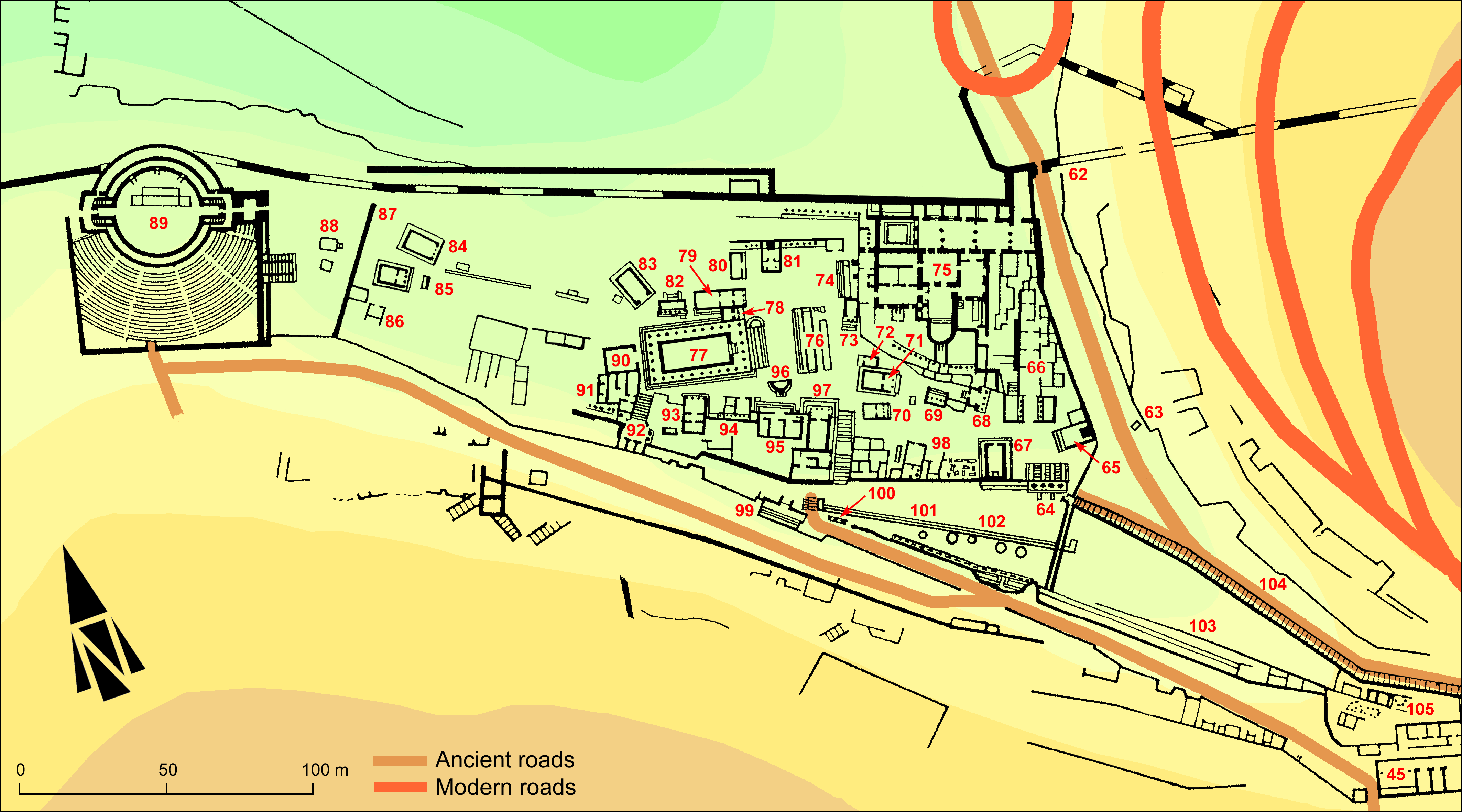EpiDoc XML:
IGCyr1266002
Trismegistos ID:
738813
Source description
Support: Upper righ angle of a white marble panel, broken off at left and below (w: 0.14 × h: 0.16 × d: 0.032).
Layout: Inscribed on the face, beginning at 0.049 from the upper edge.
Letters: 0.018-0.02, carefully cut with serifs; smaller omicron, pi with protruding upper bar, rho with small loop, non-slanting sigma, horseshoe omega.
Date: End of third or first half of second century BC (lettering).
Findspot: Found before 1979 at Cyrene ➚: plausibly Sanctuary of Apollo.
Place of origin: Findspot.
Last recorded location: Cyrene Museum, 194. Seen by C. Dobias-Lalou in Shahat: Cyrene Museum.
Text constituted from: Transcription from stone (CDL).
Bibliography
Not published before IGCyr 126600 ➚.
Cf. Rosamilia 2023, p. 197.
Text
French translation
[---] fils de [---]ippos, [---] fils de [---]dôros, ayant accompli la telesphoria [---].
English translation
[---] son of [---]ippos, [---] son of [---]doros, having accomplished the telesphoria [---].
Italian translation
[---] figlio di [---]ippos, [---] figlio di [---]doros, avendo compiuto la telesphoria [---].
Commentary
This fragmentary inscription is clearly one of the dedications made by or in honour of men who had accomplished the telesphoria. The aorist participle at line 3 lacks an ending that would help to choose between two analyses: we restored an accusative, but a nominative would also be possible. Anyhow, the letters are closely pressed together at that line, so that the participle was probably preceded by the name of a feast, either Artamitia (so IGCyr0161002) or Karneia (so IGCyr0164002).
The fragmentary character at line 4 is probably a rho and the spacement between letters is larger than at any other line. As the verb of dedication contains no rho, we probably have here the person(s) responsible for the dedication (thus the restored accusative at line 3). The name of the Cyrenaeans is impossible in view of the placement of the rho and also because that sort of dedication is never made by the city. The most plausible guess is the naming formula of the dedicant at the nominative, made of a rather short name and father's name.
If so, lines 1 and 2 would mention at the accusative the two persons honoured by the dedication of their images. As both father's names are compounds with very common second members, no further restoration can be proposed.
Additional note for IGCyr2: Rosamilia 2023 is dubious about the display suggested at IGCyr because, in his view, a restored accusative plural at line 3 would be too long for the space available. Opposite arguments are given above. Rosamilia would prefer one dedicant and one honoured person. This leaves no explanation for line 4 and possible further lines.
CC BY-NC-SA 4.0 Deed Attribution-NonCommercial-ShareAlike 4.0 International License.
All citation, reuse or distribution of this work must contain a link back to DOI: https://doi.org/10.60760/unibo/igcyrgvcyr2 and the filename (IGCyr000000 or GVCyr000), as well as the year of consultation.



